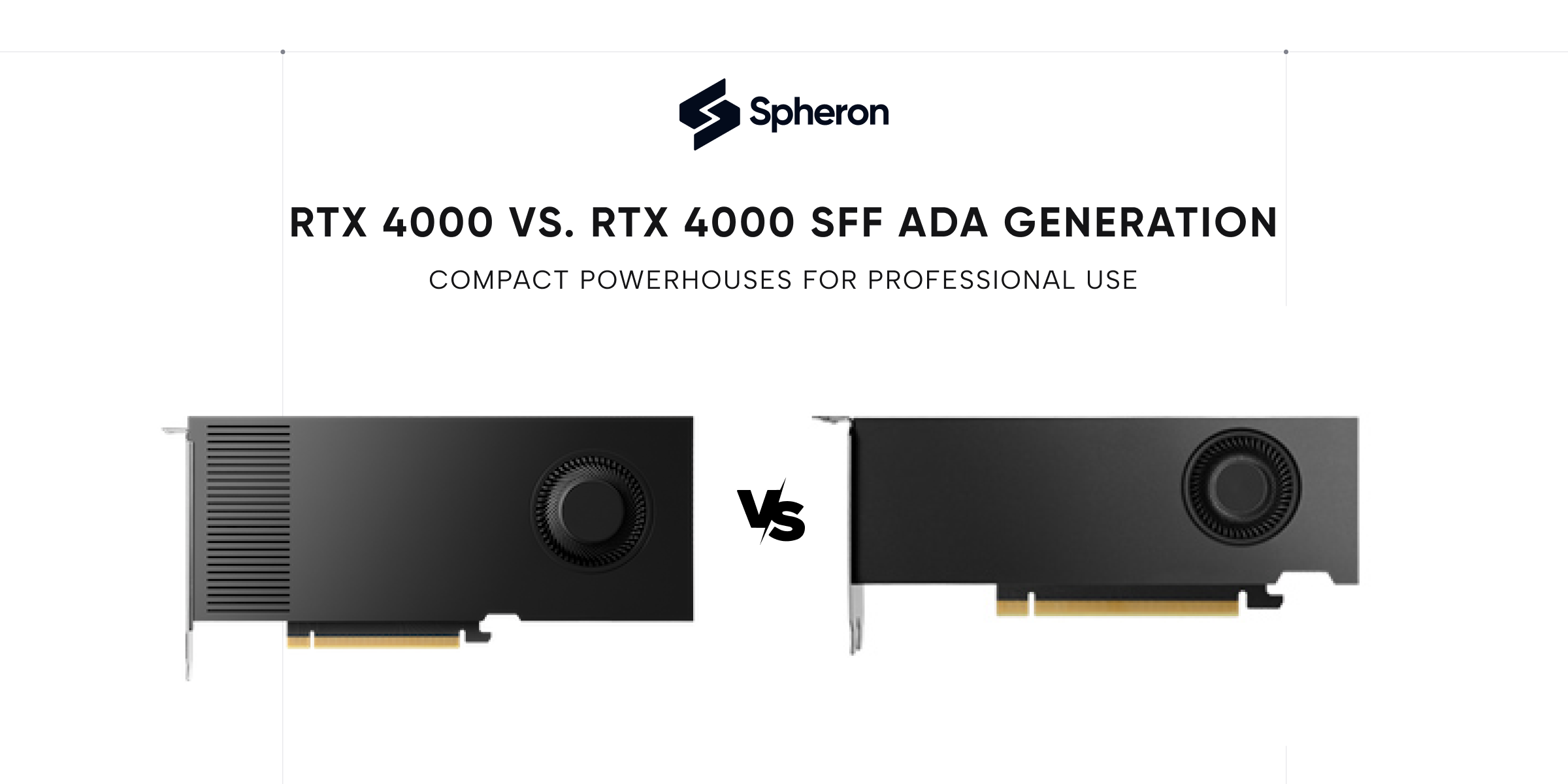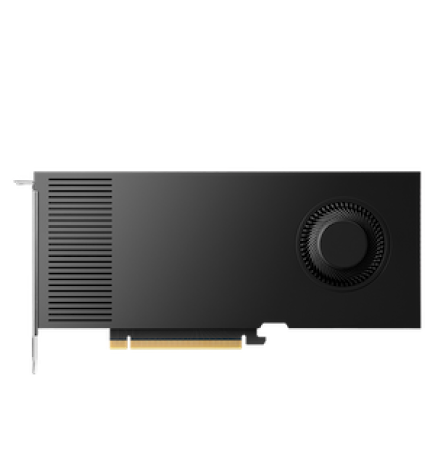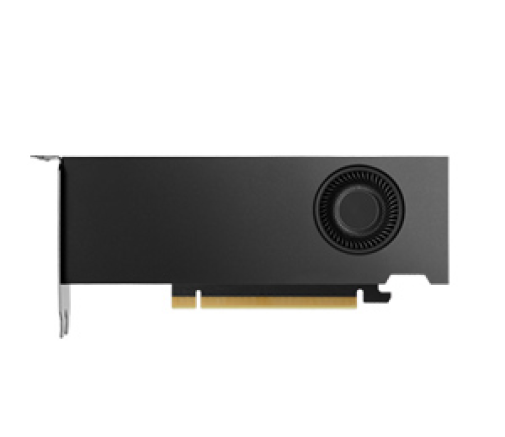RTX 4000 vs. RTX 4000 SFF Ada Generation: Compact Powerhouses for Professional Use
 Spheron Network
Spheron NetworkTable of contents
- Understanding the RTX 4000 Series
- What is the RTX 4000 SFF Ada Generation?
- Here is the comparison chart for RTX 4000 vs. RTX 4000 SFF Ada Generation
- Comparative Analysis: RTX 4000 vs. RTX 4000 SFF Ada Generation
- Who Should Choose Which?
- Future-Proofing Your Investment
- The Role of Drivers and Software Optimization
- Conclusion
- FAQs

The NVIDIA RTX 4000 series stands as a beacon of performance, reliability, and innovation in professional graphics processing. Designed to meet the demanding needs of professionals in architecture, engineering, video production, and AI development, these GPUs offer a level of power that is impressive and essential for high-end workflows. Among the RTX 4000 lineup, the standard RTX 4000 and the more recent RTX 4000 SFF (Small Form Factor) Ada Generation are two standout options catering to different professional needs. But how do these two GPUs compare, and which is the right choice for your work? Let's dive in.
Understanding the RTX 4000 Series

The RTX 4000 series is part of NVIDIA’s professional GPU lineup, designed to deliver top-tier performance in various applications. Whether you’re involved in 3D rendering, video production, or complex simulations, the RTX 4000 GPUs are engineered to handle it all with ease. They come packed with features like ray tracing, AI-enhanced workflows, and a robust suite of software optimizations that make them indispensable tools in a professional’s arsenal.
Key features of the RTX 4000 series include support for real-time ray tracing, which dramatically enhances the realism of rendered scenes by accurately simulating the behavior of light. Additionally, the series leverages AI through Tensor Cores, which power NVIDIA’s DLSS (Deep Learning Super Sampling) technology, allowing for significant performance boosts without compromising image quality. These capabilities are tailored to professionals who demand the best from their hardware.
Pros:
Superior raw performance
Excellent for high-end rendering and simulations
Robust cooling solutions
Cons:
Higher power consumption
Larger size limits use in compact workstations
What is the RTX 4000 SFF Ada Generation?

The RTX 4000 SFF Ada Generation is NVIDIA’s response to the growing need for powerful yet compact GPUs. SFF GPUs are designed for environments where space is at a premium, such as compact workstations or mobile setups. Despite its smaller footprint, the RTX 4000 SFF does not compromise on performance, thanks to the advanced Ada Lovelace architecture that underpins it.
Ada Lovelace, named after the 19th-century mathematician often credited as the first computer programmer, represents the latest in NVIDIA’s architectural advancements. This architecture introduces improvements in power efficiency, AI processing, and ray tracing capabilities, making the RTX 4000 SFF a formidable contender in any professional setting. The compact design of the SFF model ensures that it can be easily integrated into smaller workstations without sacrificing the power needed for demanding tasks.
Pros:
Compact and space-efficient design
Advanced AI and power efficiency
Lower power consumption and heat generation
Cons:
Slightly lower raw performance
Potential thermal limitations in extreme workloads
Here is the comparison chart for RTX 4000 vs. RTX 4000 SFF Ada Generation
| Feature/Specification | NVIDIA RTX 4000 | NVIDIA RTX 4000 SFF Ada Generation |
| Architecture | Ampere | Ada Lovelace |
| CUDA Cores | 6144 | 6144 |
| Tensor Cores | 192 | 192 |
| RT Cores | 48 | 48 |
| Memory | 16 GB GDDR6 | 20 GB GDDR6 |
| Memory Interface | 256-bit | 160-bit |
| Memory Bandwidth | 448 GB/s | 320 GB/s |
| TDP (Thermal Design Power) | 140W | 70W |
| Power Connector | 8-pin PCIe | No external connector needed |
| PCI Express Interface | PCIe 4.0 x16 | PCIe 4.0 x16 |
| Display Outputs | 4 x DisplayPort 1.4a | 4 x Mini DisplayPort 1.4a |
| Form Factor | Dual-slot | Single-slot SFF (Small Form Factor) |
| Cooling Solution | Active Cooling (Dual-Fan) | Active Cooling (Single-Fan) |
| Maximum Power Consumption | 140W | 70W |
| DirectX Support | DirectX 12 Ultimate | DirectX 12 Ultimate |
| Vulkan Support | Vulkan 1.3 | Vulkan 1.3 |
| OpenGL Support | OpenGL 4.6 | OpenGL 4.6 |
| NVLink Support | No | No |
| VR Ready | Yes | Yes |
| AI & Deep Learning Performance | High | Enhanced (due to Ada Lovelace improvements) |
| Ray Tracing Performance | High | Enhanced (due to Ada Lovelace improvements) |
| Target Market | Professional workstations, content creators | Professional workstations, compact systems |
| Release Date | 2022 | 2023 |
| Price Range (at release) | $900 - $1,000 | $1,200 - $1,500 |
Comparative Analysis: RTX 4000 vs. RTX 4000 SFF Ada Generation
Performance Comparison
When comparing the RTX 4000 to the RTX 4000 SFF Ada Generation, the first thing to consider is raw performance. Both GPUs offer impressive specifications, but some differences may influence your decision. The RTX 4000, based on the Ampere architecture, typically offers higher clock speeds and more CUDA cores than the SFF variant, which can translate to better performance in highly parallel workloads such as rendering and simulations.
Benchmark results show that the RTX 4000 excels in scenarios that require brute computational power, such as large-scale 3D rendering or video encoding. On the other hand, the RTX 4000 SFF, with its Ada Lovelace architecture, shines in tasks that benefit from AI processing and efficiency, making it particularly well-suited for AI research and development or tasks where power efficiency is a priority.
Architectural Differences
The architectural differences between the two GPUs are also significant. The RTX 4000 is built on NVIDIA’s Ampere architecture, a staple in professional and gaming GPUs. It offers excellent ray tracing and traditional rasterization performance, making it a versatile choice for a wide range of applications.
In contrast, the RTX 4000 SFF utilizes the Ada Lovelace architecture, which introduces several key improvements. For instance, Ada Lovelace enhances AI processing capabilities, thanks to more advanced Tensor Cores, and introduces better power efficiency across the board. This makes the RTX 4000 SFF particularly attractive for workflows that involve AI, machine learning, or any tasks where reducing power consumption is crucial.
Power Consumption and Efficiency
Power consumption is another critical factor, especially in professional environments where GPUs run at full capacity for extended periods. The RTX 4000, a more traditional full-size GPU, draws more power than the SFF variant. However, it compensates for this with higher performance in many scenarios.
While slightly less powerful in some benchmarks, the RTX 4000 SFF Ada Generation is significantly more power-efficient. This efficiency can lead to lower operating costs, especially in setups with multiple GPUs. The SFF design also generally generates less heat, which can reduce the need for extensive cooling solutions in compact workstations.
Size and Dimensions
One of the most obvious differences between the RTX 4000 and the RTX 4000 SFF is their size. The RTX 4000 is a full-sized GPU, which requires a standard ATX case or larger to accommodate it. This makes it suitable for traditional desktop workstations but can be a limitation if space is constrained.
As its name suggests, the RTX 4000 SFF is designed for small form factor cases. Its compact size makes it an excellent choice for professionals who need powerful GPUs in a more portable or space-efficient setup. Despite its smaller size, the RTX 4000 SFF does not compromise much on performance, making it a compelling option for mobile workstations or compact desktop builds.
Cooling Solutions
Cooling is always a concern with powerful GPUs; the form factor plays a significant role in managing heat. The full-sized RTX 4000 typically uses a more robust cooling solution, with multiple fans and large heatsinks to effectively dissipate heat. This allows it to maintain high performance even under heavy loads.
In contrast, the RTX 4000 SFF employs a more compact cooling system designed to fit within its smaller chassis. While this can sometimes lead to higher temperatures under load, NVIDIA has engineered the SFF variant to balance performance and thermal efficiency. Advanced cooling techniques, such as vapor chamber cooling and high-efficiency fans, keep the SFF model running cool and quiet.
Use Cases and Applications
Professional Workflows
Both GPUs have strengths in professional workflows. The RTX 4000 is ideal for tasks that require maximum raw performance, such as large-scale CAD projects, detailed 3D rendering, or extensive simulations. Its higher clock speeds and CUDA cores allow it to process complex tasks faster, which can be a significant advantage in time-sensitive environments.
While slightly less powerful in terms of raw performance, the RTX 4000 SFF Ada Generation excels in workflows that benefit from AI and machine learning. Its advanced Tensor Cores and efficient design make it perfect for applications like AI model training, real-time data analysis, and other tasks where AI processing is critical.
Content Creation
Both GPUs offer excellent capabilities for content creators. The RTX 4000’s superior rendering performance makes it a great choice for video editing, animation, and visual effects work. Its ability to handle complex scenes with high fidelity ensures creators can work faster and produce higher-quality content.
The RTX 4000 SFF is also a solid choice for content creation, especially for those who need a portable solution. Its Ada Lovelace architecture provides excellent AI-driven features that can accelerate tasks like video upscaling and noise reduction, making it a powerful tool for creators on the go.
AI and Machine Learning
The RTX 4000 SFF Ada Generation takes the lead in AI and machine learning. Its optimized Tensor Cores and efficient architecture make it well-suited for AI workloads. Whether you’re training deep learning models or running complex AI simulations, the SFF variant provides the power and efficiency needed to handle these tasks effectively.
While the RTX 4000 is also capable in AI applications, its focus on raw performance makes it less efficient than the SFF model in tasks that heavily rely on AI processing. Professionals prioritizing AI and machine learning would likely find the RTX 4000 SFF the better choice.
Cost and Value for Money
The RTX 4000 typically comes with a higher price tag when considering cost due to its superior raw performance. However, for professionals who need the absolute best in processing power, the investment is often justified by the time savings and enhanced capabilities it provides.
While still a premium product, the RTX 4000 SFF Ada Generation is often more affordable. Its cost-effectiveness, advanced AI capabilities, and power efficiency make it a strong contender for those who need a balance between performance and budget. In the long run, the lower power consumption of the SFF model can also lead to savings on electricity and cooling, further enhancing its value proposition.
Who Should Choose Which?
Choosing between the RTX 4000 and the RTX 4000 SFF Ada Generation depends on your needs. If your work involves intensive rendering, simulations, or other tasks requiring maximum raw power, the RTX 4000 is likely the better choice. Its superior performance will save you time and allow for more complex projects.
On the other hand, if you need a powerful GPU in a compact form factor, especially for AI-driven tasks or in environments where power efficiency is critical, the RTX 4000 SFF Ada Generation is the way to go. Its performance, efficiency, and portability balance make it ideal for modern, space-constrained workstations.
Future-Proofing Your Investment
Both GPUs are solid investments for the future, but your choice should consider how technology is evolving. The RTX 4000, with its robust architecture, is likely to remain relevant for years in traditional rendering and simulation tasks. However, as AI plays a more significant role in professional workflows, the RTX 4000 SFF Ada Generation’s advanced AI capabilities might offer better future-proofing, especially in fields like AI research, data science, and automation.
The Role of Drivers and Software Optimization
NVIDIA’s commitment to driver updates and software optimization plays a crucial role in these GPUs' performance. The RTX 4000 and RTX 4000 SFF Ada Generation benefit from NVIDIA’s extensive software ecosystem, which includes regular driver updates that optimize performance for the latest software and workloads. This ensures that your GPU remains at peak efficiency even as your software evolves.
In today’s world, sustainability is a crucial consideration for many professionals. The RTX 4000 SFF Ada Generation’s power efficiency reduces operational costs and contributes to a lower carbon footprint. NVIDIA’s efforts to produce more energy-efficient products reflect a broader commitment to sustainability, making the SFF model a greener choice without compromising performance.
Conclusion
In the battle of RTX 4000 vs. RTX 4000 SFF Ada Generation, both GPUs are powerful tools for professionals. The RTX 4000 offers unparalleled raw performance, making it ideal for demanding tasks that require maximum processing power. Meanwhile, the RTX 4000 SFF Ada Generation, with its compact design, advanced AI capabilities, and power efficiency, is perfect for professionals who need a balance between performance and portability. Your choice will depend on your specific needs, but either way, you’re investing in a powerhouse that will elevate your work to the next level.
FAQs
What is the main difference between the RTX 4000 and the RTX 4000 SFF Ada Generation?
- The main difference lies in their architecture and form factor. The RTX 4000 is based on the Ampere architecture and offers higher raw performance. At the same time, the RTX 4000 SFF Ada Generation uses the newer Ada Lovelace architecture, focusing on power efficiency and AI processing in a compact design.
Can the RTX 4000 SFF Ada Generation handle the same workloads as the RTX 4000?
- While the RTX 4000 SFF can handle many of the same workloads, it typically performs better in tasks that require high raw processing power, such as large-scale rendering and simulations.
Is the RTX 4000 SFF Ada Generation suitable for gaming?
- While both GPUs are designed for professional use, the RTX 4000 SFF Ada Generation can handle gaming, especially when power efficiency is valued. However, a consumer-grade GPU might be more cost-effective for gaming purposes.
How does the power consumption of these GPUs compare in a professional environment?
- The RTX 4000 SFF Ada Generation is more power-efficient, making it a better choice for environments where energy consumption is a concern. The RTX 4000, while more powerful, consumes more energy and may require more robust cooling solutions.
What future updates can we expect for the RTX 4000 series?
- NVIDIA continues to update its GPUs with new driver releases and software optimizations. Future updates may enhance performance in emerging workflows, particularly in AI and machine learning, making the RTX 4000 and RTX 4000 SFF Ada Generation even more capable.
Subscribe to my newsletter
Read articles from Spheron Network directly inside your inbox. Subscribe to the newsletter, and don't miss out.
Written by

Spheron Network
Spheron Network
On-demand DePIN for GPU Compute